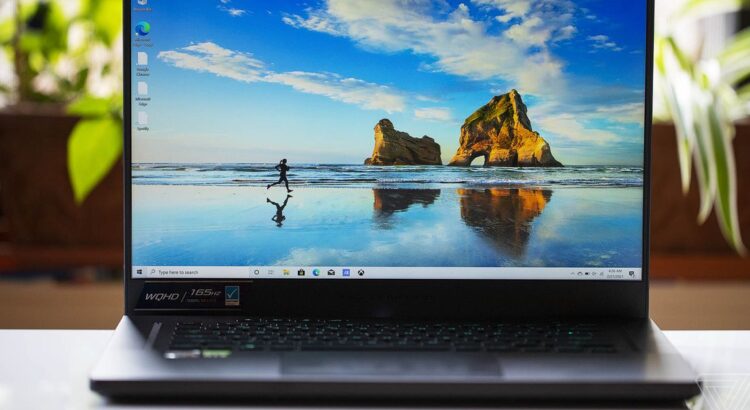Asus really carved us with Zephyrus G14 last year. It was thin, light and one of the strongest notebooks we have ever seen, thanks to the Ryzen 4000 AMD processor. But, remembering the madness of Sheer 2020, I have never got the chance to examine brothers and greater, G15. This basically took most of what I liked about G14, and put it on a more traditional 15-inch notebook. It sounds like a surefire winner, right? Now after testing the 2021 edition of Zephyrus G15, it is clearer than before that ASUS practically mastered the art of making a gaming laptop.
Not always like this for Asus. The original Zephyrus laptop is one of the first thin and thin machines in terms of GTX 1080 Nvidia GPU, but it is very expensive and has a terrible battery life. Over the years, Asus perfects the design so that it is far more practical. Zephyrus G14 is very impressive because it weighs only 3.5 pounds, but it works according to the GPU RTX 2060, the AMD CPU is very strong, and a decent battery performance.
Naturally, G15 is not as perfect, but at 4.2 pounds it is still a little easier to carry than the 4.5 pound razer bar and most other 15-inch notebooks. This is also the same as impressing it with the design-G14-wise, with sturdy magnesium-aluminum cases and unique dot-matrix patterns on the lid. Asus filled the small holes with a unique prismatic material in our review unit, but on some models they would have a small LED to display pixelated charts.
Under the hood, the G15 displays Ryzen 9 5900HS AMD, GPU RTX 30-series NVIDIA, and an optional 1.440P (Quad HD) display that runs at 165Hz with the support of G-Sync / Freesync. This is one of the first gaming laptops to cancel the new AMD hardware, and that alone makes it an interesting purchase. We are still waiting for Intel to release a larger H-Gen H-gen series chip. So, if you want something a little more resistant in the future, the Ryzen 5000 notebook makes more sense.
Our review units include NVIDIA’s RTX 3080 MAX-Q and a 1.440P screen, which feels like a perfect partner. As I wrote in our MSI GS66 stealth review, the resolution was a good upgrade above the 1080p screen, without demanding a 4K screen. While cutting baddies in Destiny 2, or jumping through some overwatch rounds, the G15 looks smooth smooth. And when I can breathe, it’s easy to see how good edges and other details look a little more clear than on the 1080p screen.
While Zephyrus G15 is strong enough to provide more than 100fps in 1.440p with graphics played in both games, which is more important to me is how well the screen follows all actions. And boys, do it. I feel like having extra advantage during a confused shootout, because the screen can easily follow my twitching mouse movement, and it also helps when I need to slow down and shrink sniper shots. Has a high refresh rate, and the screen that can automatically be synchronized with your current frame rate, is the equivalent of the perfect symphony game.
The G15 does not have a 1.440P screen the fastest around – MSI GS66 can reach up to 240Hz – but the more faster option is also more expensive. And unless you are an e-sports player who aspires high, you might have a hard time even see the difference outside 120Hz.




